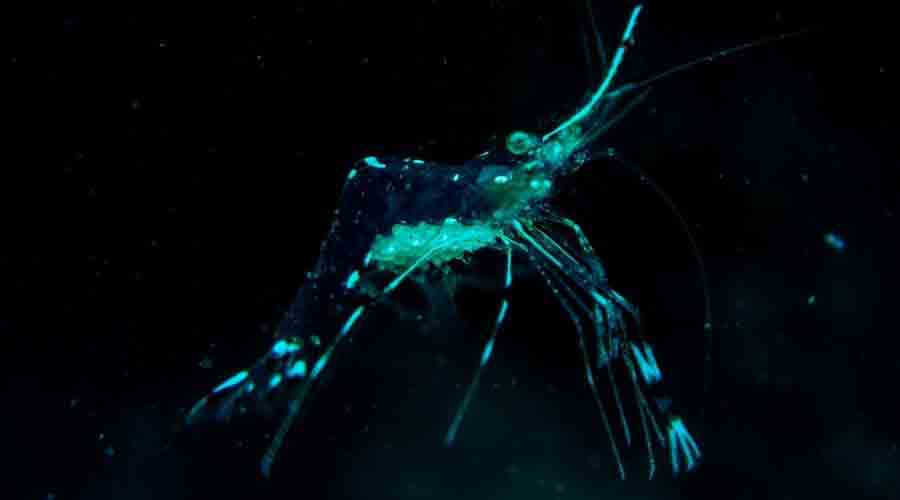In this blog, I’m going to discuss the tiny yet amazing ghost shrimp. Although these little guys are often known as feeder fish, they still are very interesting animals that deserve a little more respect, in my opinion.
Let’s take a look.
Ghost Shrimp Care Table of Contents
- Introduction
- Origin of Glass Shrimp
- Types of Shrimp
- Other Types of Shrimp
- The Temperament of Ghost Shrimp
- Ghost Shrimp Care
- Tank size
- Filters
- Water temperature
- pH
- Water changes
- Hideouts and decor
- Feeding Ghost Shrimp
- Lifespan
- Tank mates
- Can Glass Shrimp Escape From Tanks?
- Regenerating Limbs
- Will Shrimp Fight Each Other
- Recap
The Ghost Shrimp: Tiny, Unique, and Intriguing
Over the years, I’ve owned electric blue crayfish, white crayfish, and a multitude of freshwater fish. All of the aquatic life I’ve kept has been very special in their own way. And, the ghost shrimp is just another interesting creature that can be fun to keep for more than just fish food.
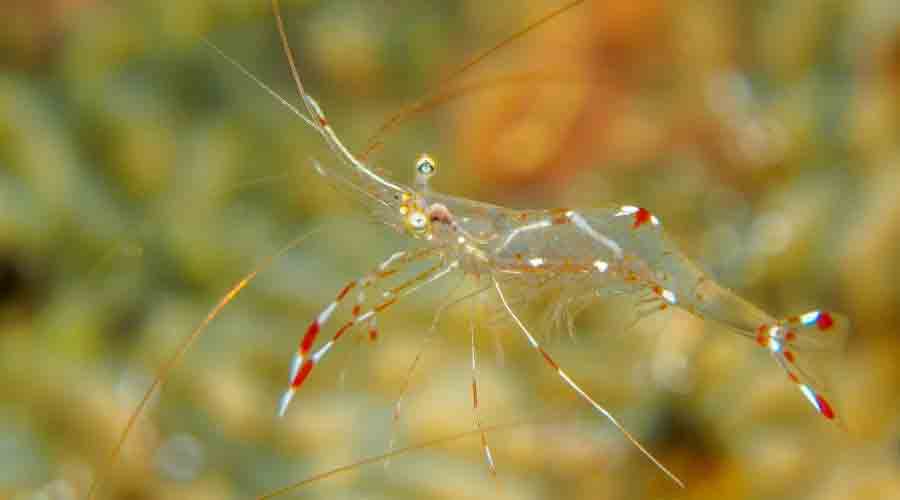
Origin of the Glass Shrimp
The ghost shrimp, or “glass shrimp” as they are sometimes called, are members of the Palaemonetes family. And, there are a few different varieties of ghost shrimp.
It’s pretty obvious why these shrimp have their name. These shrimp, who grow to a maximum of two inches, are transparent. You can literally see through the ghost shrimp’s body.
These shrimp have been around for a while and are native to North America. The best place to find these shrimp are in the Southeastern part of the U.S. and around the Gulf of Mexico.
Ghost shrimp have been a feature of many aquariums for years. As a matter of fact, these guys have been kept in fish tanks since the mid-1800s. So they aren’t exactly new to the aquarium world.
Ghost shrimp are often fed to larger fish as a source of protein. Owners of fish like Arowana, cichlids, and Oscars will often feed their fish ghost shrimp. Although some people simply keep ghost shrimp and other shrimp as a hobby.
Quick Facts
- Ghost shrimp are native to North America
- They are members of the Palaemonetes family
- Grow a max of two inches
- Are commonly used to feed larger freshwater fish
Other Types of Shrimp
Outside of ghost shrimp, there are several other different types of shrimp. Red cherry shrimp are pretty popular along with blue tiger shrimp and blue bolt shrimp—which are a very pretty and electrifying blue color.
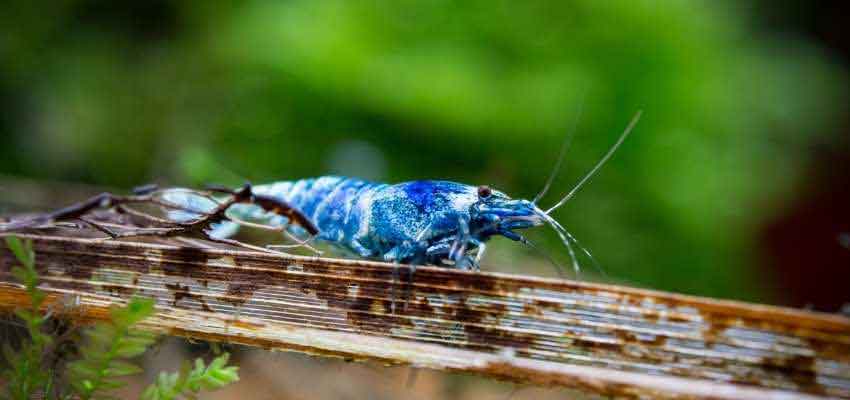
Types of Shrimp Include:
- Red cherry shrimp
- Panda shrimp
- Babaulti Shrimp
- Blue tiger shrimp
- Blue bolt shrimp
- Showball shrimp
- Crystal red shrimp
Temperament
Ghost shrimp are very peaceful little creatures. This can’t always be said about other ghosts.
These shrimp usually just mind their own business while feeding on algae and debris. Which is a reason why they are good for fish tanks. They actually enjoy cleaning the aquarium, unlike some of these aquarists out there.;)
Ghost Shrimp Care: How do You Keep Ghost Shrimp?
These shrimp are very hardy animals. They are easy to care for, and because of this, they can be great for beginning aquarists.
Although these little guys are pretty hardy, it’s still very important to keep glass shrimp in a stable water environment without making drastic water changes.
Additionally, these guys are little and pretty much defenseless. So it’s a good idea to keep these shrimp in a tank with other shrimp as other larger fish would attack or eat these shrimp.
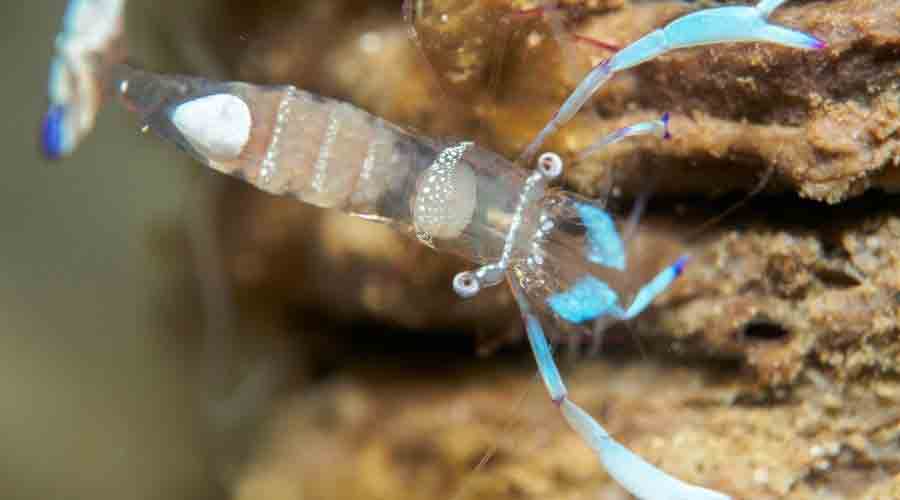
Tank Size for Ghost Shrimp
When keeping the glass shrimp, they should be kept in at least a 10-gallon fish tank. And, it’s important to note that since these shrimp don’t have a high bioload, 10 shrimp can be kept per gallon of tank water. That’s a significant amount of shrimp. So a 10-gallon aquarium could support quite a few shrimp.
When adding shrimp to the aquarium, it’s important to slowly acclimate the shrimp to the water temperature. This can be done by setting shrimp in a plastic baggy and letting them sit in the water before setting them free.
Do Ghost Shrimp Need a Filter?
Yes, although ghost shrimp have no problem doing a lot of the cleanup themselves, they do need a fish tank filter. However, because of their size, it’s best to use a sponge filter. Sponge filters will protect your shrimp from getting sucked up into the filter causing them to lose limbs or killing them.
Water Temperature
The temperature range for ghost shrimp should be between 65 and 85 degrees. However, the ideal water temperature for glass shrimp is about 75 degrees.
Higher temperatures can lead to more growth and breeding, but higher temperatures can also lower oxygen levels in the tank. And lower temperatures aren’t good because they can promote more disease.
Water pH
The pH for a shrimp tank can range from 6.5 to 8.0. But, a pH of 7 is highly recommended.
Water Changes
25 to 30% water changes should be done every week when it comes to glass shrimp care. However, it’s essential to add new water to the tank at the same temperature as the existing tank water. This helps avoid stressing out your shrimp.
Hideouts and Decor
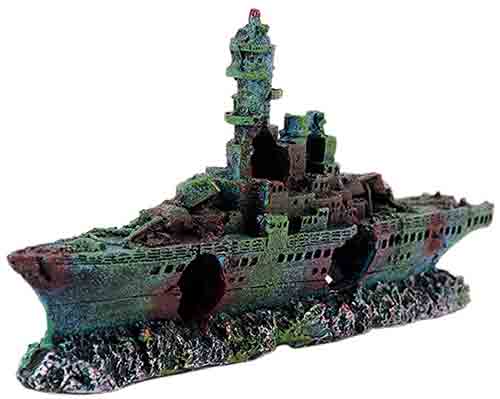
When keeping shrimp, it’s a good idea to provide them a tank environment that includes plenty of hideouts and ornaments. Some of the best fish tank decorations and hideouts for shrimp might include ornaments with tiny pockets and caves for shrimp to hide in, driftwood, fake plants, and rocks. Also, shrimp do very well in heavily planted fish tanks, and actually, planted takes are recommended for shrimp.
What do Ghost Shrimp Eat?
When it comes to glass shrimp care, the feeding part is relatively straightforward. The glass shrimp is not a picky eater at all. Again, these guys are omnivores and scavengers who feed on algae and debris in fish tanks. However, these shrimp can be fed soft vegetables.
Ghost Shrimp Eat:
- Algae
- Soft vegetables
- Shrimp granules
Lifespan
If you get super-attached to your aquatic life like many fish keepers, glass shrimp might not be for you. These guys, unfortunately, live for only about a year.
Tank Mates for the Glass Shrimp
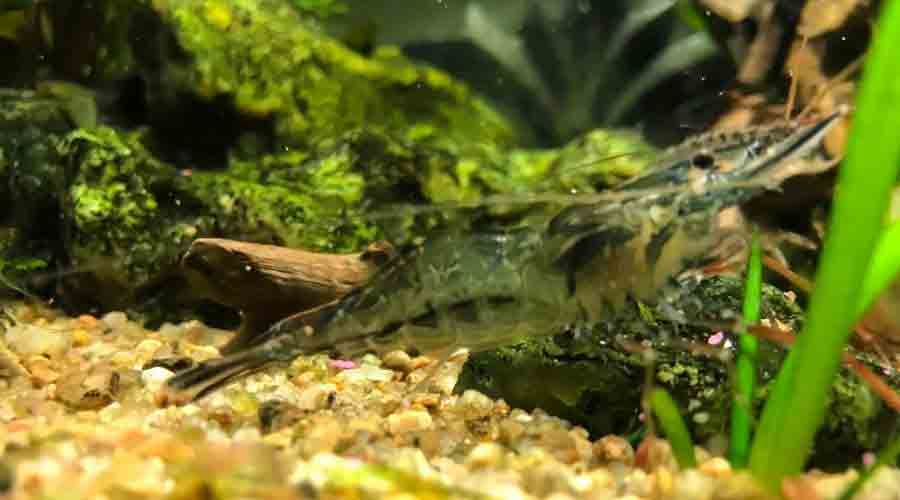
Personally, I think that ghost shrimp do better in a tank with other shrimp. Because as mentioned earlier, these shrimp can easily fall victim to larger fish in an aquarium. However, there are other fish and aquatic life that can live in a tank with glass shrimp. Just make sure there is enough room.
Tank mates for glass shrimp include:
- Nerite snails
- Mystery snails
- Corys
- Vampire shrimp
- Amano shrimp
- Cherry shrimp
Do Glass Shrimp Escape the Tank?
Crayfish are more likely to get out of a fish tank. Those guys are little escape artists. However, ghost shrimp aren’t known for jumping out of the tank. Although under certain circumstances, it can happen.
Can Glass Shrimp Regenerate Their Limbs?
Actually, yes they can. Sometimes glass shrimp might lose a limb, maybe by getting sucked into a filter or by other means. But, these shrimp can fully regenerate limbs through molting.
Some shrimp keepers say to do a water change with slightly colder water to induce molting.
Do Shrimp Fight Each Other?
This shouldn’t really be a concern as long as you provide them a big enough fish tank. These little guys aren’t exactly known for their aggression. If anything, they may bump into each other and then scurry away.
However, shrimp will eat other dead shrimp.
Ghost Shrimp Care: A Recap
Although commonly used as feeder fish for larger fish in the aquarium world, glass shrimp can still be cool animals to keep and care for. Glass shrimp care is fairly simple as these guys are hardy, not picky about their food, and don’t put out too much waste.
Although these shrimp are hardy, it’s still important to do regular water changes and keep the water at the right temperature along with the right pH level.
Check it Out

